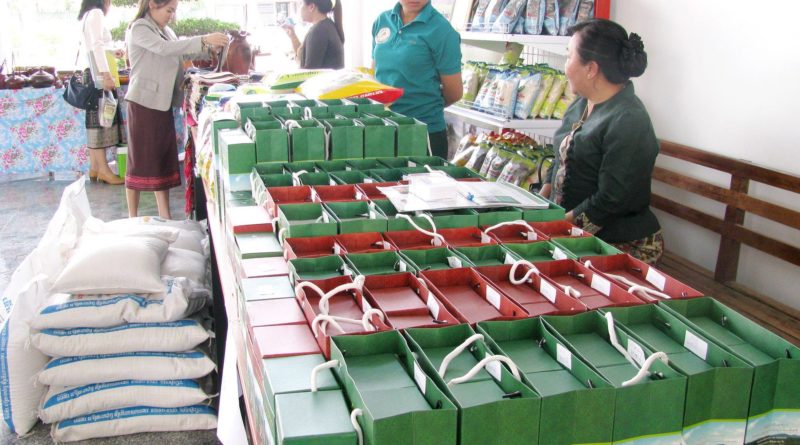Provincial SME’s Need Regulatory Burden Relief, Swifter Tax Registration
Source: Vientiane Times
Authorities need to reduce the regulatory burden or “red tape” that businesses face in conducting their activities due to rules and regulations so that their compliance costs can be cut to increase their efficiency.
The compliance costs include management time that needs to be devoted to overcoming the regulatory burden. Reduced red tape will also help cut higher administrative costs that lead to reduced productivity and profitability.
Often, the regulatory burden imposed on the private sector creates opportunities for rentseeking behaviour by officials, leading to additional costs, the Provincial Facilitation for Investment and Trade Index (ProFIT) reported.
The regulatory burden at the provincial level has been measured using five indicators: the number of times that businesses get inspected by provincial authorities, the time and cost involved in renewing tax registration certificates (an annual requirement) and the time and cost involved in renewing operating licences.
For costs involved in the renewal of tax registration certificates, an earlier ADB- Department of SME Promotion, and Lao National Chamber of Commerce and Industry (LNCCI) study demonstrated this is a costly annual exercise. The costs of renewal of tax registration certificates and operating licences include formal and informal charges.
In the case of tax registration certificate renewal by medium provinces, ProFIT shows it is relatively quick in Oudomxay province, while Bokeo province scores well on quick tax registration certificate renewal among smaller provinces.
The medium provinces include Xieng Khuang, Oudomxay, Huaphan, Xayaboury, Borikhamxay, Saravan and Khammuan.
Tax registration certificate renewal is relatively quick in Oudomxay, with more than 80 percent of businesses reporting a turnaround time of one to two weeks.
Huaphan, Bolikhamxay and Saravan are next, achieving more than 50 percent of certificates issued in less than two weeks, noted ProFIT, a survey done by LNCCI.
Xieng Khouang managed to re-issue the tax certificates within three weeks to one month in around 45 percent of cases, while Khammuan, Bolikhamxay, Saravan and Xayabouly took more than a month in about 20 percent of the cases.
The costs involved in renewing tax registration certificates varied widely. In Xieng Khouang, 80 percent of firms reported a cost of less than 2 million kip while in Khammuan, almost 60 percent of companies reported paying more than 2 million kip.
The smaller provinces include Attapeu, Phongsaly, Bokeo, Xekong and Luang Namtha.
ProFIT reported Bokeo scored well, as the time taken to renew tax registration certificates was shorter than other provinces, while in Luang Namtha, more than 20 percent of businesses waited more than a month for the renewal of tax registration certificates.
The cost of renewing tax registration certificates is, on average, the highest in Luang Namtha and Xekong, with 40 percent to 50 percent of businesses having to pay more than 2 million kip, while Phongsaly was relatively cheaper.
It is clear from these results that there is substantial room for improvement, especially the renewal of tax registration certificates should be automatic and instantaneous and without much cost. Inspections should only be undertaken if there is justifiable cause.
A special case is the necessity to renew tax registration certificates annually. The survey shows renewal is both slow and costly.
In Luang Namtha, only 21 percent of applications were processed within two weeks. In Luang Namtha and Attapeu, around 20 percent of applications took more than one month to process.
The cost of renewal of tax registration certificates can be significant. These costs include formal and informal charges. In Luang Namtha, 50 percent of firms paid more than 2 million kip annually.
However in Phongsaly, more than 40 percent of companies paid less than 1 million kip, but more than 20 percent paid more than 2 million kip.
Among medium provinces, Huaphan topped the list (75 score), indicating relatively less regulatory burden than other provinces, while Xayabouly and Khammuan were at the bottom (56.4 score and 49.2 score).
The study showed that two-thirds of businesses in Saravan and Xieng Khuang were inspected one to two times a year and that was the normal inspection.
However, 18 percent to 20 percent of businesses in Xayaboury and Khammuan stood out for a relatively high score for more than four inspections a year and a relatively low score for the two provinces.
Among smaller provinces, businesses in Phongsaly were confronted with many more inspections by various authorities than the other provinces (31 percent of businesses reported more than four inspections a year).
Phongsaly and Luang Namtha stood out by inspecting enterprises more than four times a year in 31 percent and 27 percent of cases, while Bokeo and Phongsaly notably inspected companies more than two times in 56 percent and 60 percent of cases. This poses an excessive burden on companies, in time taken that is not available to manage the company and in opportunities for rent-seeking by inspecting officials.
ProFIT is a valuable addition to the set of tools used by LNCCI to promote private sector development through informed dialogue with the government.
The survey was based on LNCCI’s membership database. Comparison of the structure, age and size of enterprises with records of the Deutsche Gesellschaft für Internationale Zusammenarbeit (GIZ) and Ministry of Planning and Investment showed the surveys are consistent with previous estimates of business size.


